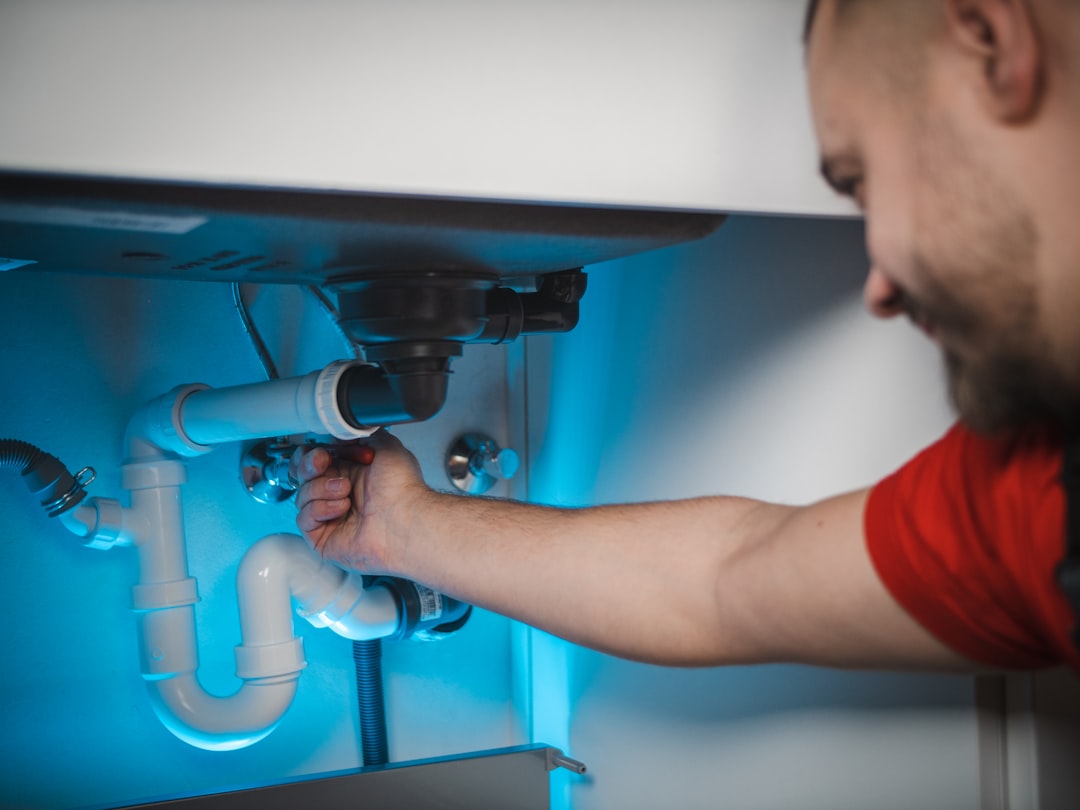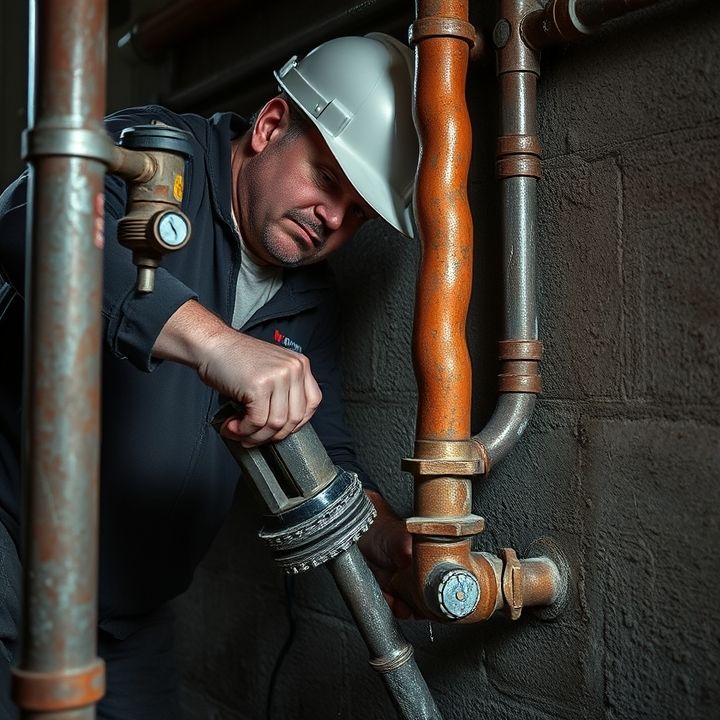Table of Contents
- Introduction
- Assessing the need for repiping a house
- Choosing the right plumbing materials for repiping
- Preparing the home for repiping process
- Executing the plumbing pipe replacement
- Installing or relocating plumbing fixtures during repiping
- Conducting plumbing leak detection and repairs
- Testing the plumbing system post-repipe
- Final inspections and compliance with plumbing codes
- Conclusion
- Frequently Asked Questions
Introduction
Are you tired of frequent plumbing issues and outdated pipes lurking beneath your floorboards?
Welcome to your comprehensive guide on repiping your home—the essential first step towards a modern, efficient plumbing system!
Not only can repiping save you from those pesky leaks and rust stains, but it also enhances your home’s overall value and functionality.
Imagine enjoying clean, fresh water in your entire home without the fear of unexpected pipe bursts or water quality concerns.
In this article, we’ll equip you with a step-by-step approach to successfully repipe your home, exploring everything from initial assessments to choosing the right materials that fit your budget and needs.
Whether you’re a seasoned DIY-er or a homeowner looking to hire professionals, we’ve got you covered.
Join us on this journey to transform your plumbing system into a modern marvel.
Assessing the need for repiping a house
Assessing the need for repiping a house is a crucial step in maintaining a safe and efficient plumbing system. Several signs can indicate that repiping may be necessary. First, frequent leaks or persistent plumbing issues often point to aging or deteriorating pipes. Corrosion can lead to reduced water pressure and, ultimately, leaks that can cause water damage.
Another indicator is discolored or foul-smelling water, which can signal rust or buildup within the pipes. If the water has a metallic taste or is brown, this is a sign that corrosion may be present.
Additionally, older homes that still have galvanized or lead pipes may require repiping to ensure the health and safety of occupants. Homeowners should also consider their water bills; a sudden increase might suggest leaks hidden from view.
Lastly, seeking a professional plumber for a thorough inspection can provide valuable insights into the current condition of the plumbing system and whether repiping is the best course of action.
Choosing the right plumbing materials for repiping
Choosing the right plumbing materials for repiping is crucial to ensure the longevity and efficiency of your home’s plumbing system. There are several materials commonly used in repiping, each with its own advantages and disadvantages.
One popular option is copper, known for its durability and resistance to corrosion. It is also effective in preventing bacterial growth, making it a safe choice for drinking water. However, copper can be expensive and may require soldering, which demands skilled labor.
PVC (polyvinyl chloride) is another widely used alternative. It is lightweight, affordable, and easy to install, but it is not suitable for hot water lines due to its temperature sensitivity.
PEX (cross-linked polyethylene) has gained popularity for its flexibility, ease of installation, and resistance to scale and chlorine. It can expand, reducing the risk of bursting in freezing temperatures.
Consider factors such as your budget, local building codes, and the specific needs of your household when selecting the right material for your repiping project.
Preparing the home for repiping process
Preparing your home for the repiping process is an essential first step to ensure a smooth and efficient project. Begin by scheduling a consultation with your plumbing contractor to discuss the scope of work and to assess your current plumbing systems. Clear out the areas around the pipes, especially in basements, attics, or crawl spaces, so the team can easily access them.
It’s also wise to inform your family about the upcoming work, as there may be some disruption to water services. Consider setting up a temporary living arrangement if the repiping is extensive.
Next, document your home’s layout, particularly the locations of existing pipes, which can help in planning the new routing. Ensure that valuable items are moved, and any furniture that may obstruct the work area is relocated. Additionally, check for any existing issues, such as leaks or water damage, that may need addressing prior to the new system installation. By taking these preparatory steps, you set the stage for a successful repiping process.
Executing the plumbing pipe replacement
Executing the plumbing pipe replacement involves several critical steps to ensure the process is efficient and effective. First, the water supply must be shut off to avoid any leaks during the work. This is typically done at the main shut-off valve. Next, the existing pipes need to be exposed, which may involve removing drywall or accessing crawl spaces or basements. Once the old pipes are exposed, they should be carefully disconnected. This often requires the use of specialized tools to cut and remove the old piping without causing damage to surrounding structures.
After the old pipes are removed, the new piping can be installed. Depending on the choice of materials—such as PEX, copper, or PVC—the installation process will vary slightly. It’s essential to follow local building codes and guidelines during installation to ensure safety and functionality. Finally, once the new pipes are in place, they should be thoroughly tested for leaks before closing up any walls or spaces. Proper execution of these steps will lead to a successful plumbing pipe replacement, ensuring smoother water flow and fewer issues in the future.
Installing or relocating plumbing fixtures during repiping
During the repiping process, homeowners often take the opportunity to install or relocate plumbing fixtures for improved functionality and convenience. This might involve moving sinks, toilets, or bathtubs to better suit the layout of a home or to enhance accessibility.
When relocating these fixtures, it is essential to plan the new water supply and drainage pathways carefully. This ensures that the new locations are feasible, while maintaining proper slope for drainage and adhering to local plumbing codes.
Additionally, homeowners should consider the implications of moving fixtures on existing walls and cabinetry. This may require modifications to the structure or even the installation of new supports.
Furthermore, choosing the right fixtures can also contribute to water efficiency and aesthetic appeal. Homeowners might opt for modern, low-flow toilets or stylish faucets that match their interior decor.
Ultimately, relocating plumbing fixtures during repiping not only addresses current plumbing issues but also offers a chance to enhance the overall design and efficiency of a home.
Conducting plumbing leak detection and repairs
Conducting plumbing leak detection and repairs is a crucial step in maintaining the integrity of a home’s plumbing system. Leaks can lead to significant water damage, mold growth, and increased water bills. The first step in leak detection is to become aware of the signs, which may include damp spots on walls or ceilings, a sudden increase in water bills, or the sound of running water when no fixtures are in use.
Once signs are observed, it is essential to locate the source of the leak. This may involve visual inspections, using moisture meters, or employing thermal imaging technology to identify hidden leaks within walls or under floors.
After pinpointing the leak, repairs can commence. Simple leaks may be fixed by tightening loose fittings or replacing damaged seals. More extensive repairs might require replacing sections of piping. It’s advisable to consult a professional plumber for leaks that are difficult to access or repair safely, ensuring that the work is done correctly and up to code.
Testing the plumbing system post-repipe
Once the repiping process is complete, it is essential to test the plumbing system to ensure everything is functioning correctly. The first step in this testing phase is to check for any visible leaks. Inspect all newly installed pipes, joints, and fixtures thoroughly. Even a small leak can indicate a problem with the installation that needs to be addressed promptly.
Next, water pressure should be tested. This can be done by running water at various fixtures and checking for consistent pressure. Inadequate water pressure may suggest blockages or issues within the plumbing system. Additionally, it is crucial to verify the temperature of the water from both hot and cold taps to ensure the system is operating efficiently.
Finally, it is advisable to conduct a flow test. This involves running water from multiple taps simultaneously to confirm that the system can handle increased demand without any issues. A successful test phase ensures the newly installed plumbing system is reliable, which is vital for the health and comfort of your home.
Final inspections and compliance with plumbing codes
After the repiping work is completed, final inspections are a crucial part of the process. These inspections ensure that the new plumbing system conforms to the established plumbing codes and regulations. During this stage, a licensed plumbing inspector will evaluate the installation, checking for proper materials, installation techniques, and overall safety standards.
Compliance with plumbing codes is vital as it guarantees that the system will function efficiently and reduce the risk of future hazards, such as leaks or water contamination. Most local jurisdictions require that the plumbing work be inspected and approved before the system is put into operation. It is essential for homeowners to keep all documentation regarding the inspections, as this can affect future property value and insurance claims.
Homeowners should communicate closely with their plumbing contractor throughout this phase to address any potential issues promptly. Once the final inspection is passed, homeowners can be assured that their new plumbing system is safe, efficient, and compliant with all local regulations.
Conclusion
In conclusion, repiping your home is an essential investment that enhances the safety, efficiency, and functionality of your plumbing system. By following the structured steps outlined in this guide—from assessing the need for repiping to ensuring compliance with plumbing codes—you can make informed decisions that will benefit your household for years to come. If you’re experiencing issues with leaks, low water pressure, or discolored water, it’s time to take action. Don’t let plumbing problems disrupt your daily life. Call 573-555-2121 today to get expert plumbing assistance and ensure your home’s plumbing is modernized and reliable.

